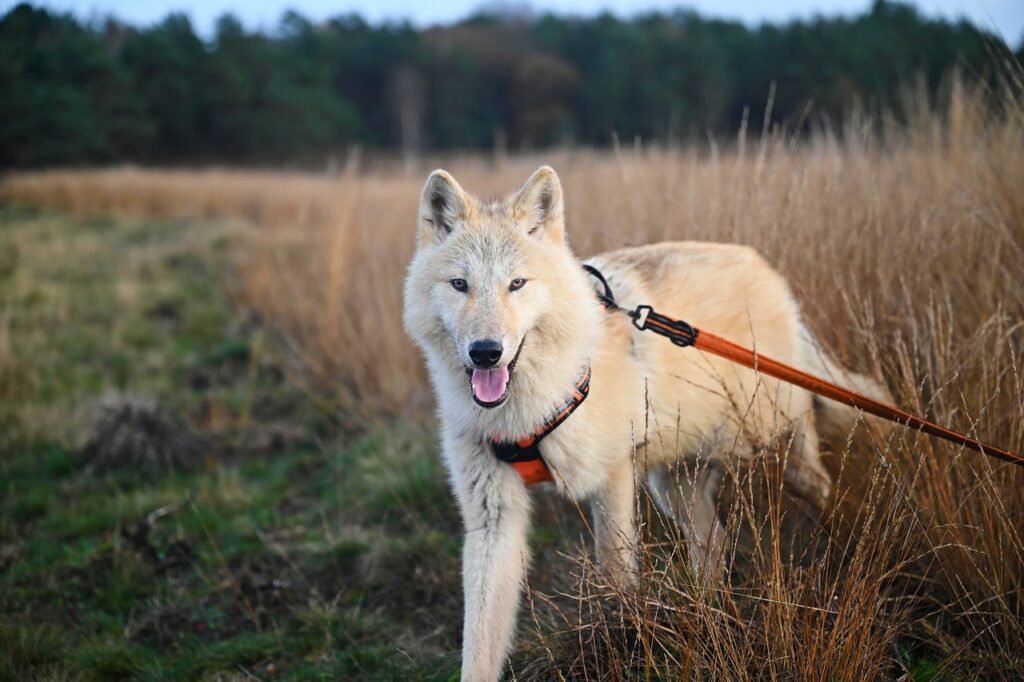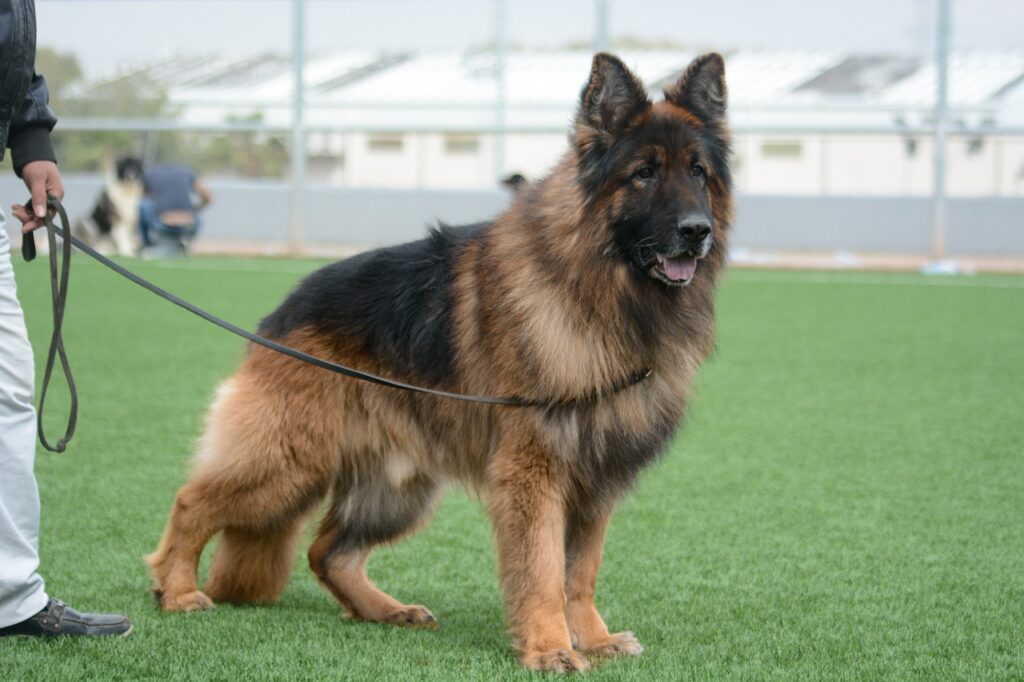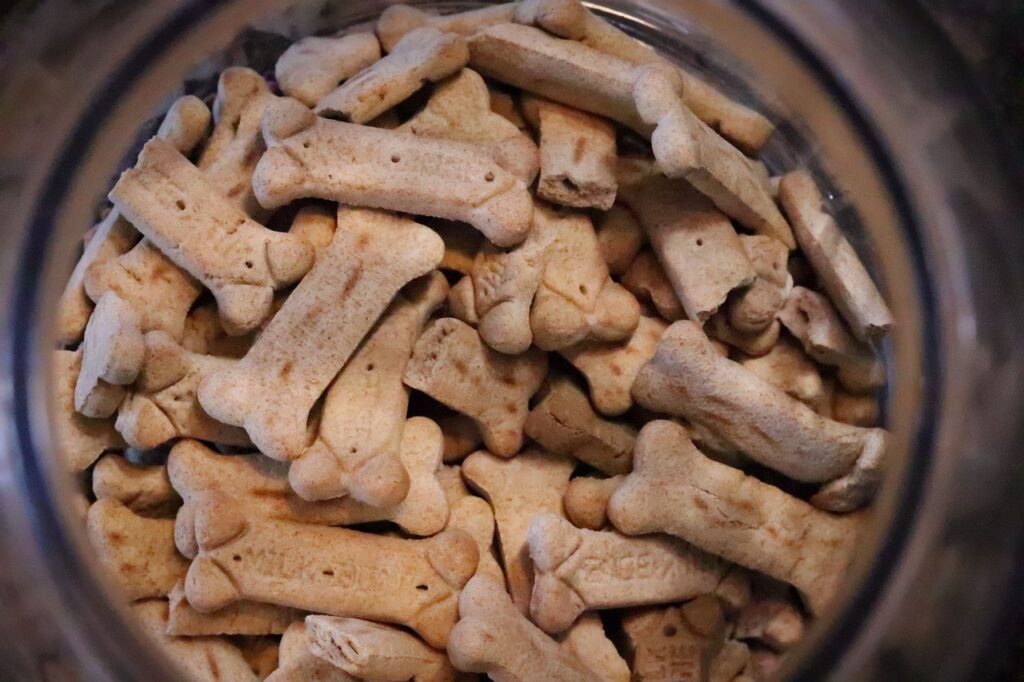Embarking on a DIY dog collar and leash project not only taps into your creative side but also provides a personalized touch to your furry friend’s daily walk essentials. To ensure the durability and comfort of your handmade set, it’s crucial to pick high-quality materials. Lightweight Cotton Twill for the touch of softness, nylon webbing for the undeniable strength, and robust hardware to bring it all together. Make sure to have a measuring tape, a good sewing machine, and a few other tools on hand—trust us, it’ll make the process a whole lot smoother.
As you maneuver through fabric choices and webbing lengths, remember that each measure, cut, and stitch adds a layer of love to your creation. Imagine taking precise neck measurements, reinforcing every edge, and securing hardware that keeps your pup safe and stylish.
As for those evening walks, reflective thread isn’t just a decorative element; it’s a beacon of safety for you and your canine companion. Ready your work space, and let’s dive into the art of customizing a collar and leash that will have other dog owners asking, “Where did you get that?”
Gathering the Materials for Your DIY Dog Leash and Collar
Before you dive into creating a personalized dog leash and collar for your furry friend, it’s essential to line up all the right materials and tools. This part is crucial because quality materials make for a durable and good-looking set, while the right tools will make your DIY project easier and more enjoyable. Let’s make sure you’ve got everything you need to get started to make the right kind of leash and collar for your furry friend.
Selecting Durable Fabrics and Nylon Webbing
Choosing the right fabric and webbing is the foundation of creating a sturdy and fashionable dog collar and leash. Lightweight Cotton Twill is an excellent choice for the fabric due to its durability and the variety of patterns and colors available.
Here’s how to get your fabric sorted:
- If just making a collar, a fat quarter should do. But grab a full yard if a matching leash is on your agenda, especially for extra length.
- Choose a heavy-duty sewing needle, like a denim needle, since you’ll be sewing through layers. This can save you from frustrating mid-project needle breaks.
For the inside track of your collar and leash, you’ll want nylon webbing—it’s the muscle behind the fabric’s charm. It provides the necessary reinforcement to handle the pulling and tugging a leash inevitably endures. Often, a 1-inch-wide nylon web is chosen for its sturdiness. Be sure to trim it 2 inches shorter than the collar for a snug fabric fit.

Choosing the Right Collar and Leash Hardware
Your collar will need a D-ring for tags and leash attachment, a slide adjuster for fitting, and a buckle for closure. Similarly, the leash will require a reliable clasp, typically a swivel or snap hook, to attach to the collar. Consider heavy-weight hardware for large breeds or strong dogs that might put extra stress on their gear.
Ensure that all these components match in size—nothing worse than a buckle that doesn’t fit your webbing. Also, for those who like a bit of sparkle or want to personalize their dog’s gear, look for decorative hardware that might feature different metals or even engraving options.
Tools You Will Need: Measuring Tape, Sewing Machine, and More
Here’s your toolkit list. Don’t fret if you don’t have all these right away; you might find substitutes around the house or at a local store.
- A measuring tape is a must for bespoke fitting, so your pooch’s collar isn’t too tight or too loose.
- A sewing machine saves time and gives you that clean, professional finish.
- Sewing clips or pins are life-savers for keeping everything aligned as you sew.
- Scissors or a rotary cutter are must-haves for slicing through nylon and fabric cleanly.
- A lighter for cauterizing the edges of the nylon webbing, preventing fraying and extending the life of your dog’s new accessories.
- A matching thread to make your stitching seamless, quite literally.
- An iron and ironing board to press the fabric flat before you begin, ensuring a crisp, clean finish.
Don’t forget a good heavy-duty needle; a regular one might just snap when it hits that nylon webbing. And if you’re planning on maneuvering through some thicker layers, a walking foot for your sewing machine can be a game-changer.
Optional: Decorative Elements and Reflective Thread
Here’s where you can let your creativity run wild. Add your personal touch to your dog’s leash and collar:
- Reflective thread, like Wonderfil Flash Reflective thread, boosts visibility for those late-evening walks. It’s not just practical; it adds a cool, ghostly glow that’s pretty stylish.
- Embellishments, such as ribbons, patches, or embroidery, can give that unique flair that sets your dog apart at the park.
Feel free to experiment. Just be sure any add-ons won’t bother your pup or pose a chewing hazard. Safety first, fashion second!
| Material | Recommended Size/Length | Usage |
|---|---|---|
| Fabric (Lightweight Cotton Twill) | 1 fat quarter for collar; 1 yard for leash | Covering for collar and leash |
| Nylon Webbing | 1 inch wide, length varies | Reinforcement within collar and leash |
| Hardware (D-ring, Slide Adjuster, Buckle) | To match width of webbing | Functional parts of collar |
| Snap Hook | To match width of webbing | Attachment point for leash |
| Heavy-Duty Needle (Denim) | Size 90/14 | For sewing through multiple layers |
Stitching Your Custom Dog Collar
Creating a custom dog collar for your furry friend is a rewarding project that not only gives you a unique piece of pet gear but also can ensure a perfect fit for your dog’s comfort. The first step is measuring your dog’s neck to ensure you make a collar that fits just right. Once you have your measurements, you can cut the fabric and nylon webbing to the appropriate size. Remember, the nylon webbing adds that essential reinforcement for a durable, long-lasting collar.
After cutting, the next stage is attaching the hardware. You’ll need a buckle, a sliding adjuster, and a D-ring. Each piece has its function: the buckle ensures that you can put on or take off the collar easily, the slider allows for adjustability, and the D-ring provides a secure attachment point for a leash or tags. Finally, top stitching not only adds to the life span of the collar by preventing fraying, but it also brings in that personal touch of style, whether you choose to go for a simple clean finish or incorporate decorative threads.
Measuring Your Dog’s Neck for the Perfect Fit
Ensuring your DIY dog collar fits like a glove means starting with an accurate measurement of your dog’s neck. You can use a measuring tape to get this right. For comfort, it is ideal to add about 2 inches to the neck measurement. This extra space allows for a snug fit—tight enough that the collar won’t slip over the dog’s head but loose enough for comfort.
A handy tip is to follow the “two-finger” rule: you should be able to comfortably slide two fingers under the measuring tape when it’s around your dog’s neck. Also, if you’re replacing an old collar, add about 12 inches to that length to factor in the material for the buckles and the slide adjuster.
Cutting Fabric and Webbing to Size
Now it’s time to get cutting. Depending on your dog’s neck size and the desired width for the collar, your fabric should generally be twice the length of your dog’s neck size and four times the width you have in mind for your finished collar. The nylon webbing, which provides the collar with its strength, should be cut 2 inches shorter than the fabric to comfortably fit inside the fabric once folded. Make sure to treat the edges of the webbing with a lighter to prevent any fraying over time.
For a 1-inch-wide nylon collar, cut your fabric strip at 4½ inches wide to properly cover the webbing. It’s also a good idea to use sewing clips like Wonder Clips to hold the materials in place before you get to stitching, making the sewing process smoother and easier on your hands.
Reinforcing the Collar with Nylon Webbing
Every pet parent wants the peace of mind that their four-legged companion’s collar will hold up in any situation, and that’s where nylon webbing comes in. Essentially, your fabric is providing the style, while the webbing underneath is doing the heavy lifting. You’ll want to use a heavy-duty sewing needle—preferably a denim needle—to attach the webbing to the fabric.
A tried-and-true method for prepping your fabric for the webbing is to fold it similar to bias tape. That means folding the fabric strip in half, then folding each half to the center, and finally, folding it in half again. This encases the webbing snugly as you stitch over it to create a neat and sturdy collar.
Adding the Hardware: Buckle, Adjuster, and D-Ring
Picking the right hardware is crucial for both functionality and aesthetics. For example, a parachute buckle makes for easy snapping on and off, while a strap adjuster lets you customize the fit to your dog’s neck. Make sure all the pieces, like the D-ring, match in size and fits the width of your nylon webbing and fabric.
When assembling, thread the webbing through the buckle and adjuster correctly, and secure it with a straight stitch followed by a box with an X through the center. This ensures the D-ring won’t slide along the collar and stays put next to the buckle. The D-ring is the attachment point for your leash and tags and needs to withstand a fair amount of tugging and wear.
Top Stitching for Durability and Aesthetics
The final touch to your custom collar is top stitching. This step involves sewing along both the top and bottom edges of the collar, securing the fabric to the webbing and ensuring everything stays in place. You can choose a thread color that contrasts with your fabric for a pop of color or opt for a matching thread for a more discreet finish.
For an additional touch of style and safety, consider using reflective thread. Embellishments can also be added to give that personalized flair, which comes in handy for those community dog-walking sessions. Whether you sew on patches, iron-on decals, or some embroidery, these final details turn a simple collar into a statement piece for your pooch.
| Neck Size (+2 inches for comfort) | Fabric Length (twice the neck size) | Webbing Length (2 inches shorter than fabric) |
|---|---|---|
| 12 inches | 28 inches | 26 inches |
| 16 inches | 36 inches | 34 inches |
Assembling a Matching Dog Leash
Completing your fur baby’s look with a homemade matching leash is not only rewarding but personalized to your pup’s needs. Assembling a dog leash that coordinates with your DIY collar involves precise measurements for length and width, and the addition of a sturdy clasp for easy attachment.
Considering the strength and activity level of your dog is essential, especially if you have a larger breed. A 1-inch-wide nylon webbing is a common choice for its durability. With a bit of sewing know-how, the right materials, and some creativity, you can craft a leash that is both functional and stylish.
Determining the Length and Width of Your Leash
First things first, you’ll want to decide on the length of your leash. Standard leashes are usually around 5 feet long—a perfect balance between control and freedom for your dog. If you require a different length, simply adjust your measurements accordingly, keeping in mind any leash laws in your area. The width of the leash largely depends on your dog’s size and your comfort—bigger dogs often benefit from wider straps.
For example, if you’re making a leash for a strong, large dog, you might want to go with a wider nylon webbing. Conversely, a smaller or less forceful dog might do just fine with a narrower option.
Here’s a handy table to help you decide:
| Dog Size | Recommended Leash Width |
|---|---|
| Small | 1/2 inch |
| Medium | 3/4 inch |
| Large or Strong | 1 inch or more |

Attaching the Ribbon and Sewing the Webbing
After cutting your nylon webbing to the desired length and using a lighter to carefully burn the edges to prevent fraying, it’s time to attach the ribbon or fabric. It’s best to select lightweight cotton twill or a similar durable material that complements your custom collar. The fabric should be cut to a width that accommodates folding over the webbing. For a 1-inch webbing, a strip about 4½ inches wide is appropriate.
The fabric strip should then be folded in a manner similar to making bias tape, with the edges meeting in the middle. It helps to press the fabric with an iron for a crisp finish. Nab some sewing clips to hold everything in place before running it through the sewing machine. Jeans Needles and a straight stitch along both edges will secure the ribbon to the webbing snugly.
Creating the Handle Loop and Securing the Clasp
To make the handle, you’ll need to measure about 8 inches from one end of your leash, fold it over, and sew a loop that’s large enough for your wrist or hand. Keep the raw edges neatly tucked in. Tucking in raw edges while sewing your loop ensures a smooth finish and extra durability, and can be perfected with a little practice. Add a swivel or snap hook to the opposite end, sewing back and forth a few times to reinforce the attachment point.
If you want to include a nifty spot to hang a poop bag holder, simply slide a D-ring onto the handle before you sew it in place. This step is optional, but it’s a convenient feature that you and your pup will appreciate on your walks.
Stitching for Extra Strength: The Box Stitch Technique
For both the collar and the leash, the box stitch is a popular choice for reinforcing areas that will bear the most stress—like where the handle forms and where the clasp is attached. The box stitch, essentially a box with an X through its center, adds significant strength to these crucial points, ensuring that the leash can withstand the pull and play of your pooch.
It’s best done using a heavy-duty thread that matches or adds a touch of contrast to your fabric. Remember that this extra step is key in making your DIY leash reliable for daily use.
Customizing: Adding a Poop Bag Carrier Hook or Reflective Edges
Your dog leash is functional, but why not make it fun and extra safe, too? Customization can be as simple as selecting colorful patterns or adding embellishments like name tags or charms. For those evening walks, consider sewing in reflective thread to give it that glow-in-the-dark edge—a safe yet chic touch.
Reflective edges are not just stylish but they also increase visibility, an important factor for walking your dog at night or in low-light conditions. Whether you’re sewing a leash to match a custom collar or starting fresh, these personal touches can make your creation unique and loved by both you and your pup.


